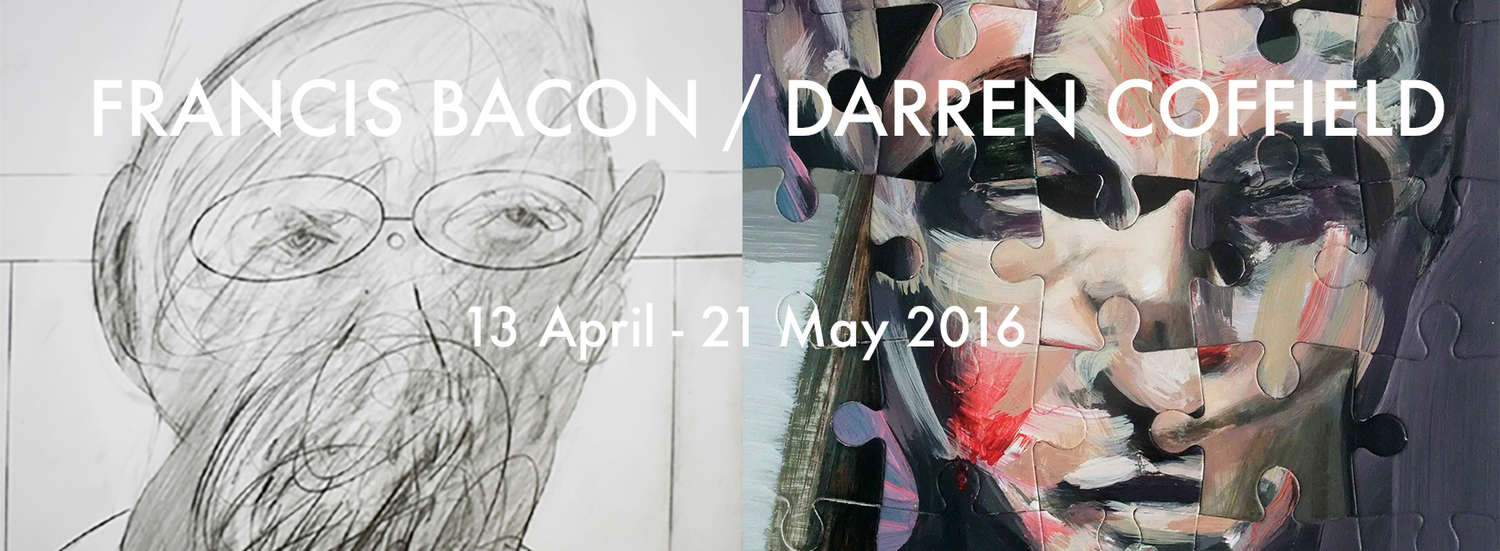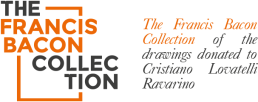FRANCIS BACON / DARREN COFFIELD
13 April – 21 May 2016

Herrick Gallery is proud to present Francis Bacon drawings and new paintings by Darren Coffield. Despite an age difference of sixty years, their paths crossed when they met in the infamous Colony Room Club, in London’s Soho. In 1949 Bacon was retained by its founder Muriel Belcher to bring in paying customers, and frequented the club until his death in 1992. Coffield belonged to a new generation who beat a path to the Colony in search of Bacon, and made it their home in the late ‘80s. Coffield met Bacon and his close friend and sole heir John Edwards there and is currently completing his next book on the Colony Room Club. Both artists do figuration with a twist: Bacon’s reinterpretations of the human form are some of the most ground breaking and influential images of the twentieth century, while Coffield’s equally disturbing images evolve from painstaking and logical pursuits to non-predetermined ends, becoming paradoxical puzzles playing with perception.
The eight pencil & graphite drawings and two pastel collages by Bacon were made between 1977 and 1992 and donated to his good friend in Italy, Cristiano Lovatelli Ravarino. The subjects are often related to the themes of some of Bacon’s most iconic paintings, such as his crucifixions and those after Velazquez’s Portrait of Pope Innocent X. The large-scale pencil & graphite drawings on Fabriano paper, mostly 100x70cm, feature distraught faces and distorted bodies in spatial frameworks typical of Bacon’s oeuvre. Drawings by Francis Bacon from the Francis Bacon Collection have been exhibited extensively around the world, including the Kaoshing Museum of Fine Arts in Taiwan; the Municipal Art Gallery, Ferrara, Italy and the Centro Cultural, Buenos Aires, Argentina.
These works on paper have been the subject of much debate, since they came to light, mainly due to the fact that Bacon often claimed that he didn’t make drawings. There is extensive evidence that he did, but mischievously didn’t like the world to know about what foremost Bacon chronicler, David Sylvester, famously described as “Bacon’s Secret Vice”, in the catalogue for the 1999 Tate Gallery exhibition of Bacon’s works on paper. Sylvester elaborates: “I for my part wasn’t being entirely truthful with (Bacon) when in that interview, as in others from 1962 on, I courteously refrained from mentioning a series of small pencil-sketches for paintings which I had seen.” This myth is also addressed extensively by esteemed British art critic Edward Lucie-Smith in his essay Francis Bacon and the Act of Drawing: “…It has gradually emerged that Bacon did in fact make drawings and oil-sketches…the Tate Gallery in London purchased two groups of Bacon drawings, gouaches and oil-sketches totalling 42 sheets.” In his note on the purchase, Richard Morphet, Keeper Emeritus of the Tate’s Modern Collection, said: “Though few post-war works on paper by [Bacon] are known, it has become clear that this is not because he did not make any, but rather because he did not wish their existence to be known beyond his main circle.” Lucie-Smith concludes “I am of course speaking here from a belief that the drawings are in fact genuine … The accepted interpretation of Bacon’s career is turned upside down. Bacon is no longer a magical existentialist shaman, but something more closely resembling a ‘normal’ kind of artist.”
Bacon and Coffield are also linked through David Sylvester who was a fan of the younger artist, describing him as: “Another of those magicians who (probably without knowing) know how to imbue pieces of matter with light”. Coffield has an interest in the field of human cognition. His work deals with how we perceive and process the world around us and subverts the viewer’s instinctive faculties for reading the apparently familiar to create stimulating and provocative paintings.
In Coffield’s new series of paintings the images are first painted then broken up and dispersed in to one another. All the information is contained in the painting but not necessarily displayed in the expected cognitive order. The information is consumed and resolved; creating a new form that can be read in terms of creation, consumption or corruption. It provides a basis for approaching difficult questions such as the relation of knowledge to perception, and ‘reality’ to appearance. With this process the final artwork is cannibalised, made by the painting ‘feeding’ off itself, as he believes nothing can be more abstract than what we actually see.
Complementing the exhibition are five stunning black and white photographs of Bacon taken by award winning photographer Neil Libbert in the 1980s.
